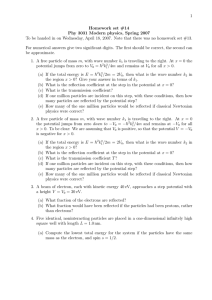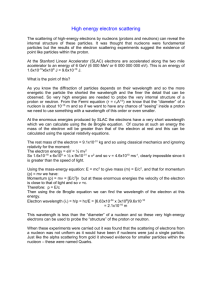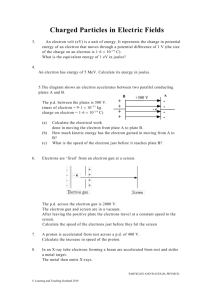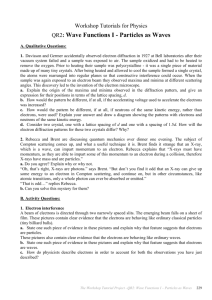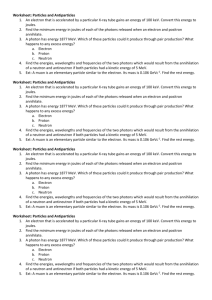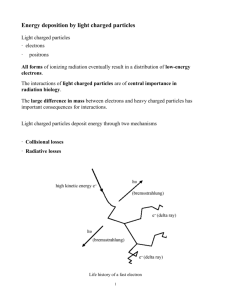Electron Properties and Arrangement Study Guide Pre-AP
advertisement
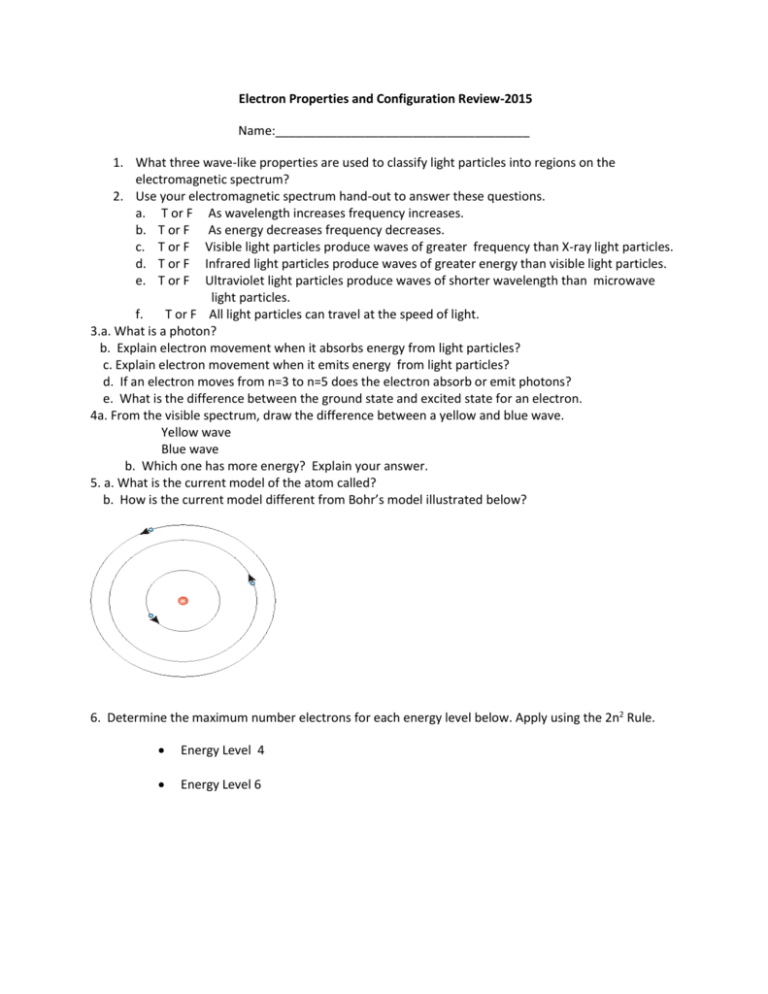
Electron Properties and Configuration Review-2015 Name:_____________________________________ 1. What three wave-like properties are used to classify light particles into regions on the electromagnetic spectrum? 2. Use your electromagnetic spectrum hand-out to answer these questions. a. T or F As wavelength increases frequency increases. b. T or F As energy decreases frequency decreases. c. T or F Visible light particles produce waves of greater frequency than X-ray light particles. d. T or F Infrared light particles produce waves of greater energy than visible light particles. e. T or F Ultraviolet light particles produce waves of shorter wavelength than microwave light particles. f. T or F All light particles can travel at the speed of light. 3.a. What is a photon? b. Explain electron movement when it absorbs energy from light particles? c. Explain electron movement when it emits energy from light particles? d. If an electron moves from n=3 to n=5 does the electron absorb or emit photons? e. What is the difference between the ground state and excited state for an electron. 4a. From the visible spectrum, draw the difference between a yellow and blue wave. Yellow wave Blue wave b. Which one has more energy? Explain your answer. 5. a. What is the current model of the atom called? b. How is the current model different from Bohr’s model illustrated below? 6. Determine the maximum number electrons for each energy level below. Apply using the 2n2 Rule. Energy Level 4 Energy Level 6 7. Determine the electron configuration for the following neutral elements: a. O: b. Ni: c. Xe: 8. How many valence electrons does each neutral element in question seven have? 9. a. Explain which element above would become a cation to reach stability. b. Explain which element above would become an anion to reach stability. 10. Identify the neutral element that has the following electron configurations. a. 1s22s22p3 : b. 1s22s22p6 3s23p64s23d7 : c. 1s22s22p6 3s23p64s23d104p65s24d105p3: 11. Circle the element’s below that are stable. a. Ca2+ b. Fe 2- c. Cl1- d. Ar e. Al f. P3- g. K1- 11. Write the electron configuration for the following charged atoms: a. Se2- : b. Mg2+ : c. I1- : d. Ga3+: 12. How many valence electrons does each neutral element below have? 13. Draw the Valence Electron Dot Structures for the following neutral elements: a. Sr b. Si d. He e. Rb c. V 14. Circle the elements below that have similar chemical properties to Boron (B): a. C b. In c. Al d. Be f. Br


